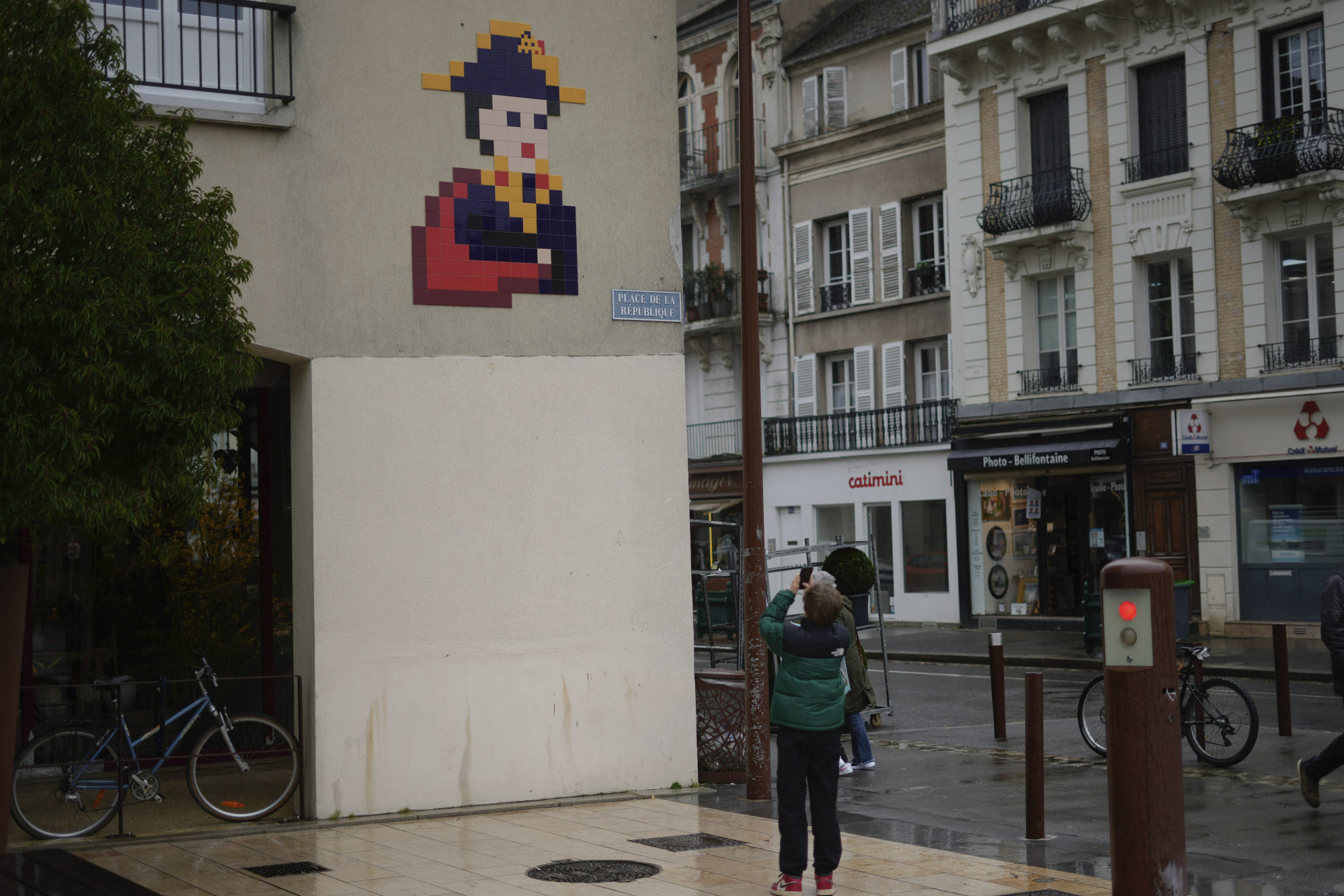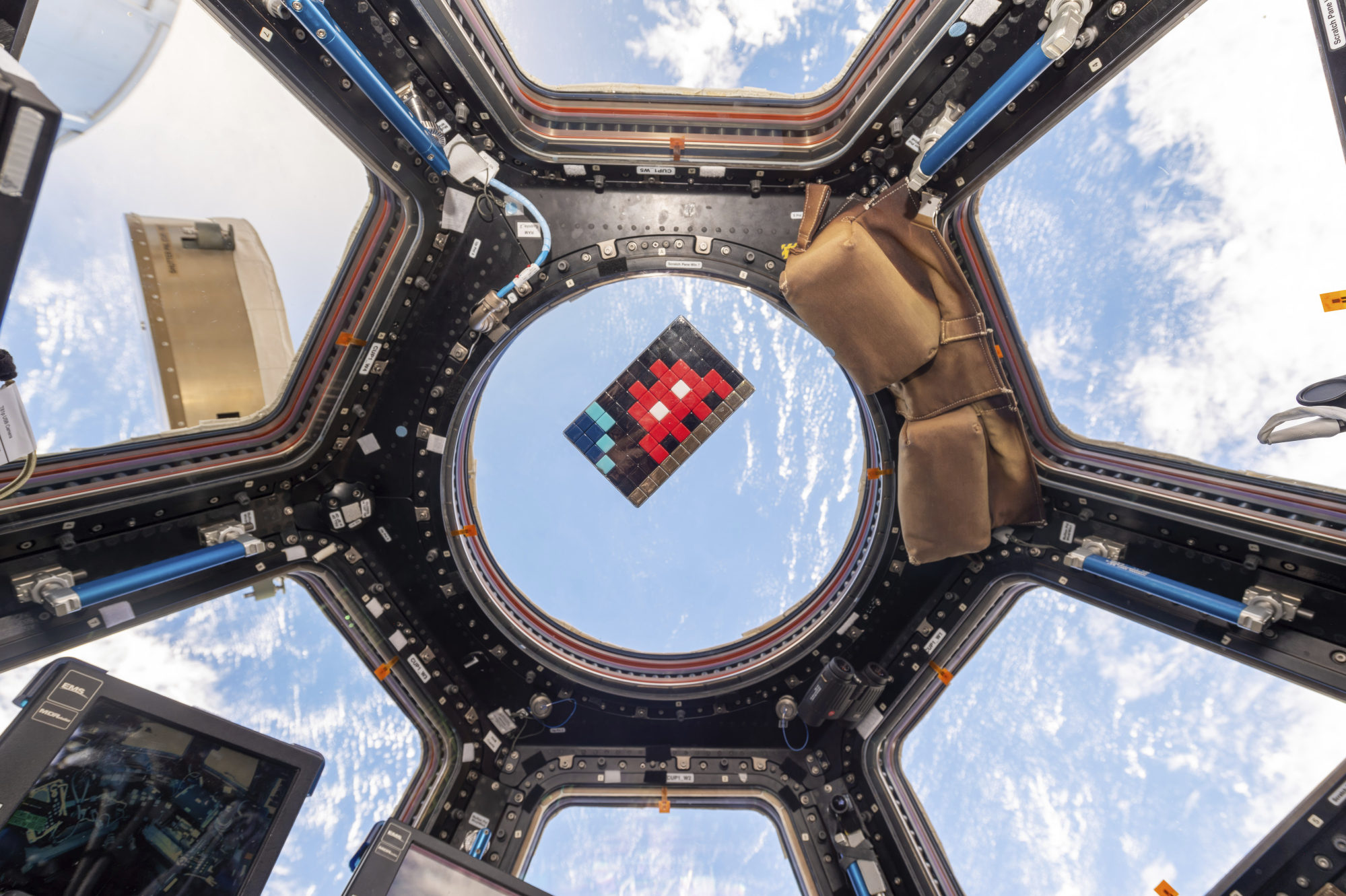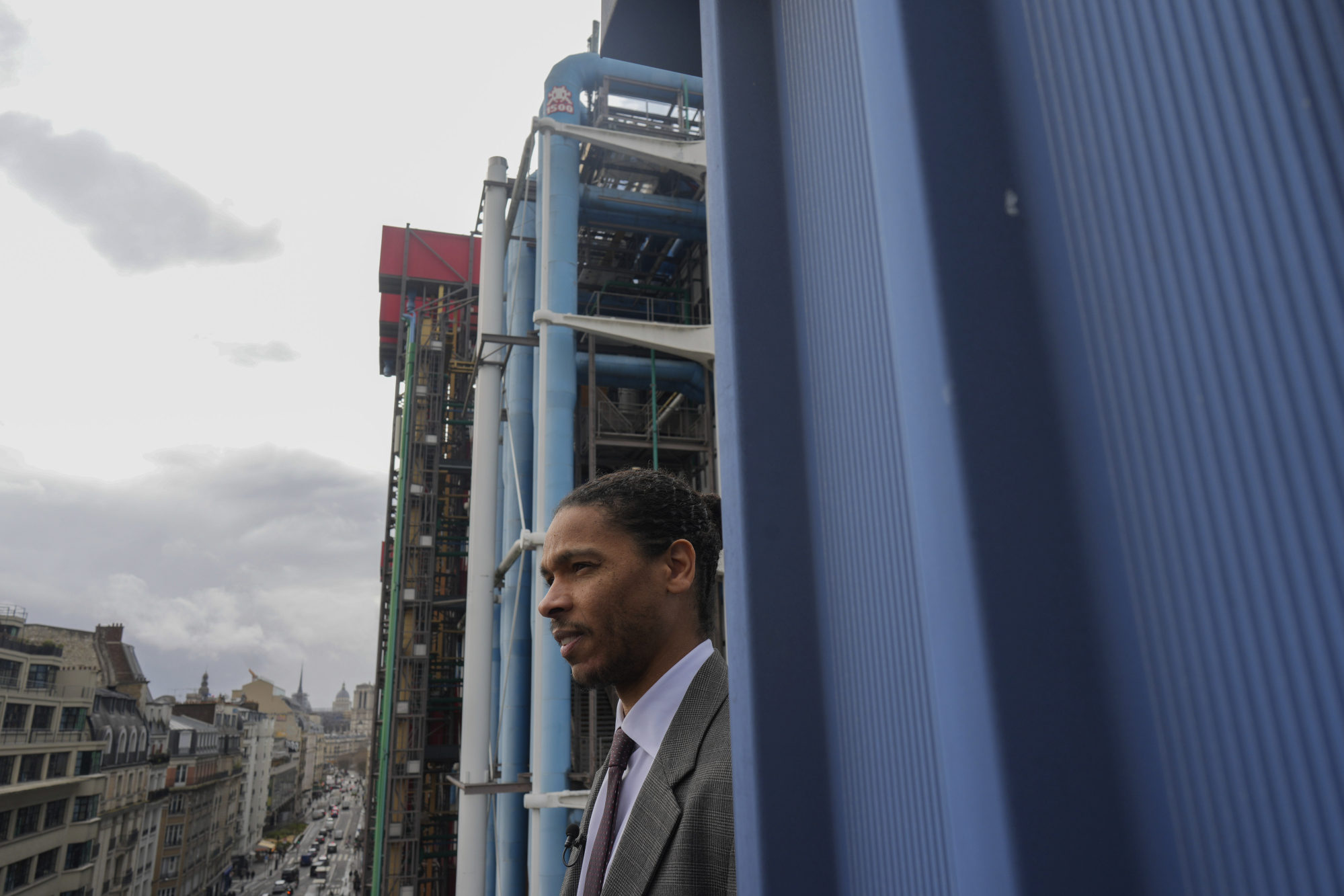For the Paris Olympics, it could almost be a new sport: score points by hunting down mosaics that a mystery artist who calls himself “Invader” has cemented to walls across France’s capital, the world – including Hong Kong – and even had carried aloft to the International Space Station.
Vincent Giraud, one of the artist’s Parisian fans, is already an avid player. He downloaded Invader’s addictive FlashInvaders mobile-phone game that awards points to users who find and photograph the colourful and quirky pieces of pixellated art.
Quickly hooked, Giraud has in just a year already tracked down 1,565 of them, accumulating so many points that he has rocketed into the leader board’s top 1,000, out of more than 360,000 players.
“In a few months I found and flashed all those in Paris,” says Giraud, whose gaming name is Vince-Vader. Hunting for Invader mosaics, looking up and around for them on walls, pavements, bridges and even atop the Eiffel Tower, is “another way of discovering the city”, he says.

When Olympic visitors flock in their millions to Paris for the Games – which will take place from July 26 to August 11 – they’ll be crowding onto the turf of France’s most international, invasive and intriguing contemporary street artist. It will be one invasion coming face to face with another.
Like Banksy, the British street artist he is sometimes likened to, Invader is elusive, fiercely protective of his anonymity and operates on the margins of legality. He comes, glues, and disappears into the night, leaving behind his signature pixellated mosaics, made mostly with small ceramic and glass tiles.
Disappearing acts: Hong Kong street art erased after officials pledge creative boost
Disappearing acts: Hong Kong street art erased after officials pledge creative boost
Most resemble the aliens from the Space Invaders arcade game. Others are wonderfully elaborate, such as still lives of fruit or, in New York, portraits of Lou Reed and Andy Warhol.
Since the first catalogued mosaic of a blue Space Invader went up on a Paris street in 1998, numbered PA_01, Invader has colonised the world. There are now more than 4,000 of his mosaics in cities and towns on all continents except Antarctica.

London, Tokyo, Los Angeles and other cities were invaded in 1999; New York, Geneva and more in 2000; Hong Kong in 2001; Berlin, Bangkok, Melbourne.
The 4,000th mosaic was glued to a brick wall in Potosi, 4,000 metres (13,100 feet) up in the Bolivian Andes, in 2021. The European Space Agency installed Invader’s Space2 mosaic aboard the International Space Station in 2015.
“‘Anytime, Anywhere’ is the philosophy,” the artist says on his website.

In Paris – by far his most invaded location – the artist’s footprint is larger than ever as the Olympics loom.
PA_1500 was unveiled in February on an exterior chimney of the Centre Pompidou, Paris’ foremost contemporary art museum. Unlike for the bulk of his works which he installs guerilla-style without asking, Invader sought and got the museum’s permission to cement the red-and-white Space Invader-type alien into place overlooking the city.

“It’s a symbol. It’s number 1,500. It’s Paris,” says Alexandre Aumis, the iconic building’s security director. “It’s got to be here.”
“I run a lot in Paris, so I see them everywhere,” he says.
Hong Kong invaded for the third time by mysterious French artist
Hong Kong invaded for the third time by mysterious French artist
Some of those who know Invader say they’re expecting him to spring more surprises for the Olympics, perhaps installing new Games-themed mosaics.
“The invasion is the 15 million people who are going to arrive in Paris for the Olympic Games. It’s a lot. Obviously, there will be Invader fans among them,” says Fabrice Bousteau, the editor of Beaux Arts Magazine who curated Invader’s latest exhibition. “So there will be this meeting between two cultures.”
“He will doubtless invade the Games in a different way. I am almost certain.”

